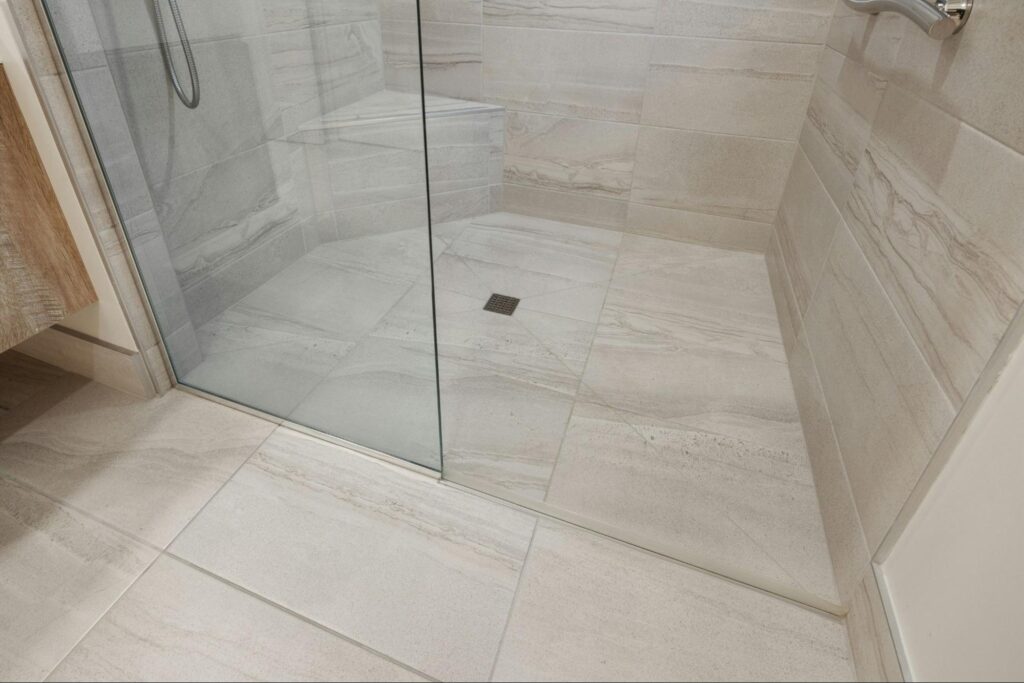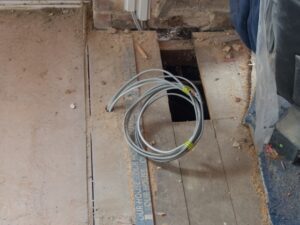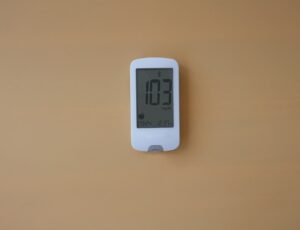A clogged shower drain can quickly go from an inconvenience to a major frustration, right?
It’s often caused by hair, soap scum, and mineral deposits, all of which build up over time. These materials can create stubborn barriers that slow down or completely block the water flow.
So, what’s the best way to handle this?
Regular maintenance is the key!
Fortunately, keeping your shower drain clear doesn’t have to be a chore. Simple solutions, like using a drain guard, can make a world of difference. But in some cases, professional help might be necessary to keep things running smoothly—don’t worry, that’s where Excel Mechanical comes in.
At Excel Mechanical, we provide specialized plumbing services, ensuring your drain works like a charm without burning a hole in your wallet. Whether it’s a clogged drain or a system check-up, we have the right solutions to keep your water flowing freely, whether it’s at home or in your business.
In this blog, you will learn:
- How to maintain and clean your shower drain to prevent blockages
- Tips to keep odors and leaks at bay
- The benefits of calling in professionals when things go wrong
Let’s break it down!
Understanding Shower Drains
Shower drains are essential in bathrooms to prevent water from pooling and causing damage. Knowing the types and components of shower drains can help you choose the best option for your needs and ensure efficient drainage.
Types of Shower Drains
Shower drains come in various styles to fit different preferences and setups.
- Point drains are the most common and feature a central location for water to funnel into. They are often circular or square and work well with a sloped shower floor.
- Linear drains are long and narrow and can be placed along one side of the shower. These are ideal for larger showers and offer a sleek, modern look.
- Tile-in drains are designed to hold the same tile as your shower floor, creating a seamless appearance.
Each type serves its purpose, and your choice depends on style preference and shower design.
Components of a Shower Drain System
A typical shower drain system consists of several key components.
- The drain cover sits at the opening and comes in various styles and materials to match your decor.
- Below the cover, the drain body connects to the pipe system, holding the cover in place and directing water efficiently.
- The strainer is a crucial part of the system, trapping debris like hair and preventing clogs.
- Some systems also include a membrane layer to ensure proper waterproofing, protecting your bathroom from leaks.
Understanding each part is vital for maintenance and when seeking professional help.
Installation of Shower Drains
Installing a shower drain involves careful planning and precise execution. For efficient water flow, you’ll need to consider factors like drain type, location, and the slope of the floor.
Pre-Installation Considerations
Before starting, think about the type of drain best suited for your shower.
Options include linear, point, and square drains. Choose one based on the shower size and design. Check local building codes for requirements related to plumbing and drainage. These codes help ensure a safe and effective installation.
Consider the drain location. It should align with the plumbing to prevent unnecessary modifications. Ensure the subfloor is stable and water-resistant. Proper sealing is crucial to avoid leaks, which can lead to water damage over time.
Accurate measurements will help align everything perfectly during installation.
Step-by-Step Installation Guide
Start by gathering the necessary tools: a screwdriver, hacksaw, plumber’s putty, and a wrench.
- Shut off the water supply to avoid accidents.
- Cut a hole in the shower base according to the drain size.
- Insert the drain body into this hole, securing it with a rubber gasket and washers for a tight fit.
- Next, connect the drain to the waste pipe.
- Use a wrench to tighten, ensuring no leaks.
- Apply the plumber’s putty around the drain edge for a watertight seal.
- Securely screw the drain cover in place.
- Test the system by pouring water and checking for leaks or slow drainage.
Contact Excel Mechanical for professional assistance if needed. We offer top-notch HVAC and plumbing services tailored to your needs and budget. Our expertise ensures your shower drain works efficiently and lasts for years.
Common Issues with Shower Drains
Shower drains can experience several problems, which can affect their function and cleanliness. Common issues include clogs, leaks, and bothersome smells.
Clogs and Blockages
A frequent issue with shower drains is clogs caused by hair, soap scum, and mineral buildup. These materials accumulate over time, slowing down water drainage.
Sometimes, clogs can occur when there’s a buildup in the pipes further down, not just near the drain. Regularly cleaning out the drain cover and using a drain snake can help manage this problem.
Home remedies, such as vinegar and baking soda, can be effective for mild clogs. For persistent blockages, contact a professional plumber to ensure the pipes are properly cleared and functional.
Leaky Shower Drains
Leaks in shower drains lead to water damage, mold growth, or unpleasant odors.
Leaks often occur when seals around the drain weaken or deteriorate over time. You might notice water stains on the ceiling below your shower or damp areas around the drain.
Checking for leaks regularly and ensuring drain seals are intact helps prevent these issues. If the leak is more severe than expected, a professional service can inspect and repair the drain.
Odor Problems
Odor issues in shower drains usually result from trapped debris, standing water, or clogs. The smell can become more noticeable when the shower is in use.
Regularly cleaning the drain and making sure it’s clear of debris from soaps and shampoos can help minimize this issue. Sometimes, the odor signifies a deeper plumbing problem, such as a dry P-trap or venting issues.
Whether for home or business, we deliver tailored solutions to meet your specific needs and budget, ensuring a pleasant and functional bathroom environment.
Maintenance and Cleaning
Keeping your shower drain clear and well-maintained is essential for smooth water flow and to prevent unpleasant odors. Regular cleaning and simple preventive measures can save you from costly repairs and inconvenience.
Regular Cleaning Techniques
Consistent upkeep of your shower drain is vital.
- To clean, first remove any visible debris from the drain cover.
- Use a mixture of baking soda and vinegar.
- Pour half a cup of baking soda into the drain, followed by a cup of vinegar.
- Let them fizz for about 10-15 minutes. This natural solution helps break down build-up.
- Afterward, flush the drain with boiling water to clear out any remaining residue.
- If water isn’t draining properly, a plunger can help. Press firmly to create suction and clear minor clogs.
For deep cleaning and stubborn clogs, consider professional tools or services.
Preventing Drain Blockages
Simple habits can help stop blockages.
- Install a drain cover to catch hair and soap particles. Regularly remove hair from the cover to prevent it from slipping into the drain.
- Avoid pouring substances like grease, oils, or heavy soaps that can harden and block pipes. Rinse your drain routinely with hot water to break up any oils or residues.
Advanced Troubleshooting
When dealing with a shower drain that continues to cause problems, it’s crucial to pinpoint the exact issue and decide whether you need professional help or if you can manage it yourself.
Identifying Persistent Issues
Start by inspecting the drain for any visible clogs or blockages.
Hair, soap scum, and debris are common culprits. Using a flashlight, check deep into the drain to spot any buildup. For hard-to-see problems, try a plumber’s snake or a chemical drain cleaner to clear them out.
Strange noises, like gurgling or bubbling, could indicate a serious issue, such as venting problems or pipe blockages. Inconsistent water flow or slow drainage might signal a partial clog or even pipe damage.
Odors rising from the drain can be a sign of sewage backup or mold growth. Look out for these signs and assess the situation carefully.
Professional vs. DIY Solutions
For minor clogs, basic tools like a plunger or drain snake might be all you need.
These can efficiently clear out the obstruction. Chemical drain cleaners offer another DIY option but use caution and follow safety instructions.
If problems persist, hiring experts, like Excel Mechanical, ensures reliable service and quality results. Our skilled technicians are well-equipped to handle both residential and commercial problems, providing tailored solutions for all budgets.
Complex or recurring issues often require professional assessment.
Upgrading Your Shower Drain
Updating your shower drain can improve your bathroom’s functionality and style. Consider modern drain options for aesthetics and efficiency, and think about eco-friendly choices for sustainability.
Modern Drain Options
Modern shower drain designs offer sleek and efficient solutions.
Linear drains are popular for contemporary bathrooms. They provide a clean look and better water flow. They’re ideal for larger showers or when you want a barrier-free entry.
Square or square tile drains blend seamlessly with floor tiles, giving a minimalist appearance. Some drains come with removable covers for easy cleaning. Choose models with anti-clog features to reduce maintenance.
Matching the finish of your drain with your fixtures can enhance the overall design.
Eco-Friendly and Sustainable Choices
Eco-friendly shower drain options reduce water waste and environmental impact.
Water-efficient drainage systems, like those with water recycling features, save water by redirecting excess water for use in toilets or gardens.
For sustainability, select drains made from recycled materials. Additionally, consider drains with built-in filtration to prevent pollutants from entering local water supplies.
Opting for these choices helps you contribute to environmental conservation.
Legal and Compliance Standards
When installing or maintaining a shower drain, it’s important to consider specific legal and compliance standards. These include meeting building codes and ensuring accessibility for all users. Compliance is crucial for safety and usability.
Building Codes
Building codes are essential for ensuring your shower drain installation is safe and efficient.
These codes vary by location, but they generally cover aspects like drainage capacity, pipe materials, and installation methods. Proper drainage is crucial to prevent water damage and ensure hygiene.
Meeting these standards protects your investment and helps your plumbing system function smoothly and efficiently.
Accessibility Standards
Shower areas must be compliant with accessibility standards, especially in public or newly built spaces. These guidelines ensure that facilities are available for everyone, including those with disabilities.
Key features often include slip-resistant floors, appropriate drain heights, and sufficient space for wheelchair access. Ensuring these standards are met can enhance the usability of a shower for all individuals.
Cost and Budgeting
When budgeting for a shower drain installation or repair, it’s important to consider both material and labor costs.
Materials can include the drain itself, pipes, and any necessary waterproofing seals. Depending on your choices, materials can range from inexpensive basic options to more costly, high-quality materials.
Labor costs will vary based on the complexity of the job and local rates. Hiring professionals is crucial to ensure the job is done right. While DIY might seem cheaper, hiring experts ensures lasting quality and safety.
You should also account for potential unforeseen expenses. These could stem from underlying plumbing issues discovered during installation or the need for additional parts. Planning for these can keep your project smoothly on track.
Budget-Friendly Tips:
- Plan Ahead: Research your options and get cost estimates before starting.
- Compare Quotes: Reach out to a few service providers for competitive pricing.
Choosing the Right Service Provider
When you need a reliable professional for shower drain services, consider a few key factors.
- Start by checking the company’s reputation. Look for experienced providers with a proven track record in both residential and commercial services.
- Assess their experience in addressing various plumbing issues. The provider should offer customized solutions that fit your unique needs and budget.
- Another important aspect is the range of services offered. Choose a company that can handle repairs, installations, and regular maintenance. This ensures continuity and reliability over time.
- Finally, check if the provider is easily accessible for appointments and emergencies. Prompt service is crucial when dealing with plumbing issues. Reliable communication and customer support should be part of their offerings.
Frequently Asked Questions
So, what can you do when your shower drain starts acting up? Don’t worry, we’ve got you covered! Here are some frequently asked questions about shower drains, along with some real insights to help you keep your system running smoothly.
How can I unclog my shower drain?
You can start by removing any visible debris using gloves or tweezers. For deeper clogs, use a plunger or a plumber’s snake. Then, pour a mixture of baking soda and vinegar down the drain, followed by hot water, to help clear minor blockages.
What are effective methods for removing hair from a shower drain?
A drain cover or strainer can prevent hair from entering the drain. To remove hair already inside, use a drain snake or a wire hanger fashioned into a hook. This can grab and pull out hair that’s stuck.
How can I fix a slow-draining shower?
First, try using a plunger to dislodge any blockage. Baking soda and vinegar may also help clear build-up. Lastly, regularly clean the drain cover to prevent future issues. Consider calling professionals if the problem persists.
What are common solutions for standing water in a shower?
Check the drain cover for blockages. Clean it thoroughly and remove any hair or soap scum. Use a plunger or drain snake if the water drains slowly. If these steps don’t work, professional service may be required.
Can I unclog a shower drain naturally, and if so, how?
Mix equal parts baking soda and vinegar and pour it down the drain. Wait 15-20 minutes, then flush with hot water. This natural method helps break down clogs without harsh chemicals.
What should I do if a shower drain cannot be physically removed for cleaning?
Use a drain snake or a flexible cleaning tool to reach inside the drain. Then, pour a mixture of baking soda and vinegar to remove the blockage. If these options don’t work, contact a professional like Excel Mechanical for expert help.




